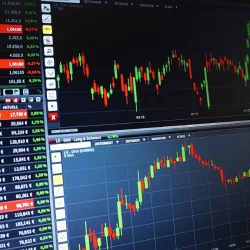Recession vs. Depression: Understanding the Differences
Economic downturns are an inevitable part of financial cycles, but not all downturns are created equal. The terms recession and depression are often used interchangeably, yet they refer to very different economic conditions. Understanding the key differences between the two can help individuals and businesses make informed financial decisions during uncertain times.
What is a Recession?
A recession is a significant decline in economic activity that lasts for a few months or more – it is typically characterised by:
- A fall in GDP (gross domestic product) over two consecutive quarters
- Rising unemployment rates
- Reduced consumer and business spending
- Lower industrial production
Recessions are a normal part of the economic cycle and can be triggered by various factors, including rising interest rates, inflation, global trade disruptions, or financial market instability. While they can be challenging, recessions are usually short-lived, lasting anywhere from a few months to a couple of years. Governments and central banks often respond to recessions with measures such as lowering interest rates and increasing public spending to stimulate growth.
What is a Depression?
A depression, on the other hand, is a much more severe and prolonged economic downturn. Unlike a recession, which may last only a year or two, a depression can persist for several years. Depressions are characterised by:
- A sharp and sustained decline in GDP
- Mass unemployment and widespread business closures
- Significant reductions in consumer confidence and investment
- A prolonged financial crisis, often including bank failures and deflation
The most well-known example of an economic depression is the Great Depression of the 1930s, which lasted for nearly a decade and had long-term effects on the global economy. Unlike recessions, which can often be managed through monetary and fiscal policies, depressions require more drastic and prolonged interventions to recover.
Key Differences at a Glance
|
Aspect |
Recession |
Depression |
|
Duration |
Months to a few years |
Several years or more |
|
Severity |
Moderate decline in GDP |
Sharp and sustained GDP decline |
|
Unemployment |
Increases but remains manageable |
Mass unemployment and job market collapse |
|
Business Impact |
Some business closures |
Widespread bankruptcies and economic failure |
|
Recovery Time |
Faster recovery |
Long-term recovery with structural changes |
How to Navigate Economic Downturns
Whether facing a recession or a depression, financial preparedness is key. Individuals and businesses can take proactive steps to weather economic challenges, such as:
- Building an emergency fund to cover unexpected expenses
- Reducing unnecessary debt to maintain financial stability
- Diversifying income sources to avoid reliance on a single stream of revenue
- Investing wisely, focusing on long-term financial security
- Seeking financial education, such as resources like Money 101, to improve financial literacy and decision-making
While recessions and depressions share similarities, their differences are significant
A recession is a temporary economic setback, while a depression is a prolonged and severe downturn. Understanding these distinctions can help individuals and businesses make informed choices to protect their financial well-being during uncertain times. By staying financially savvy and prepared, you can better navigate economic challenges and emerge stronger on the other side.
More to Read:
Previous Posts:




